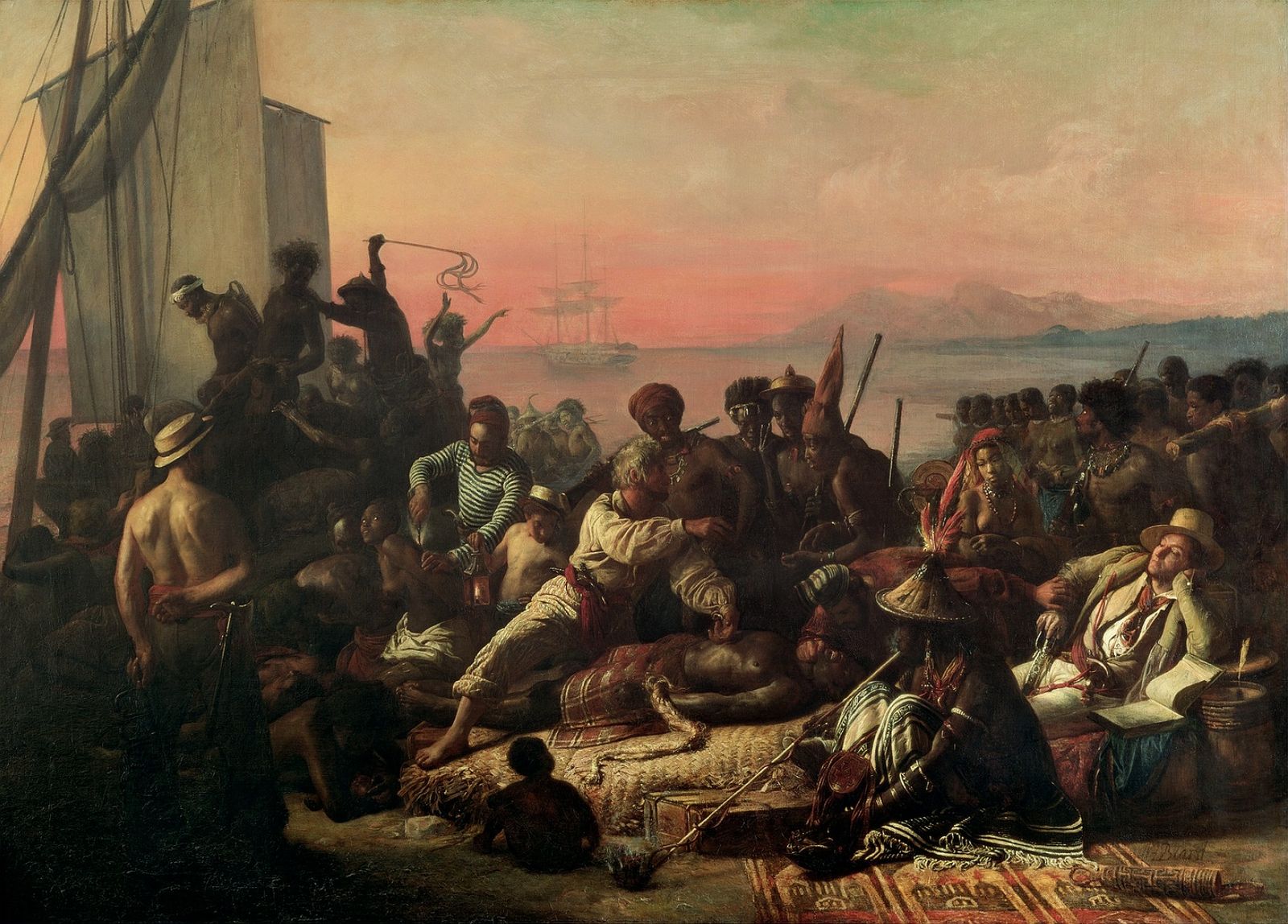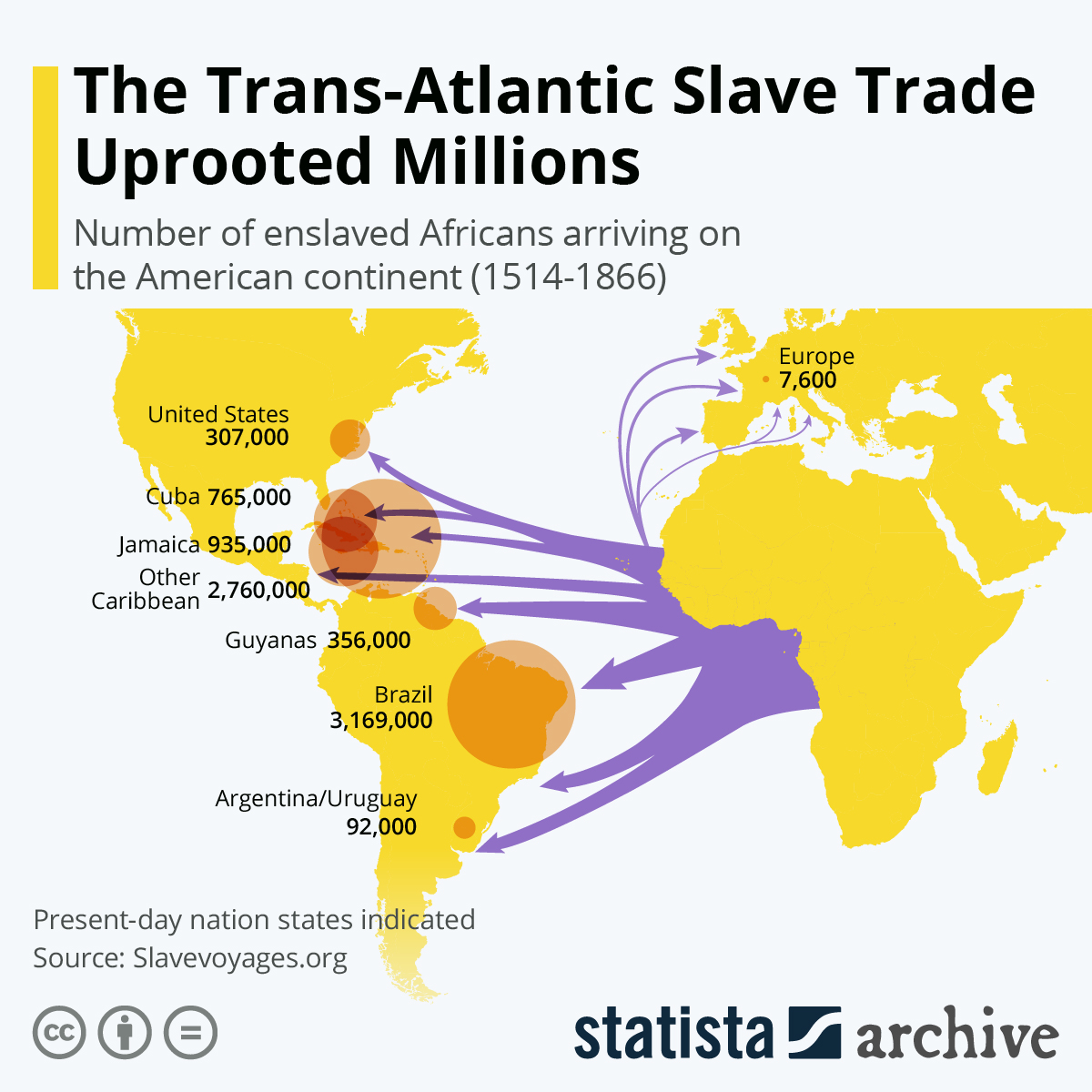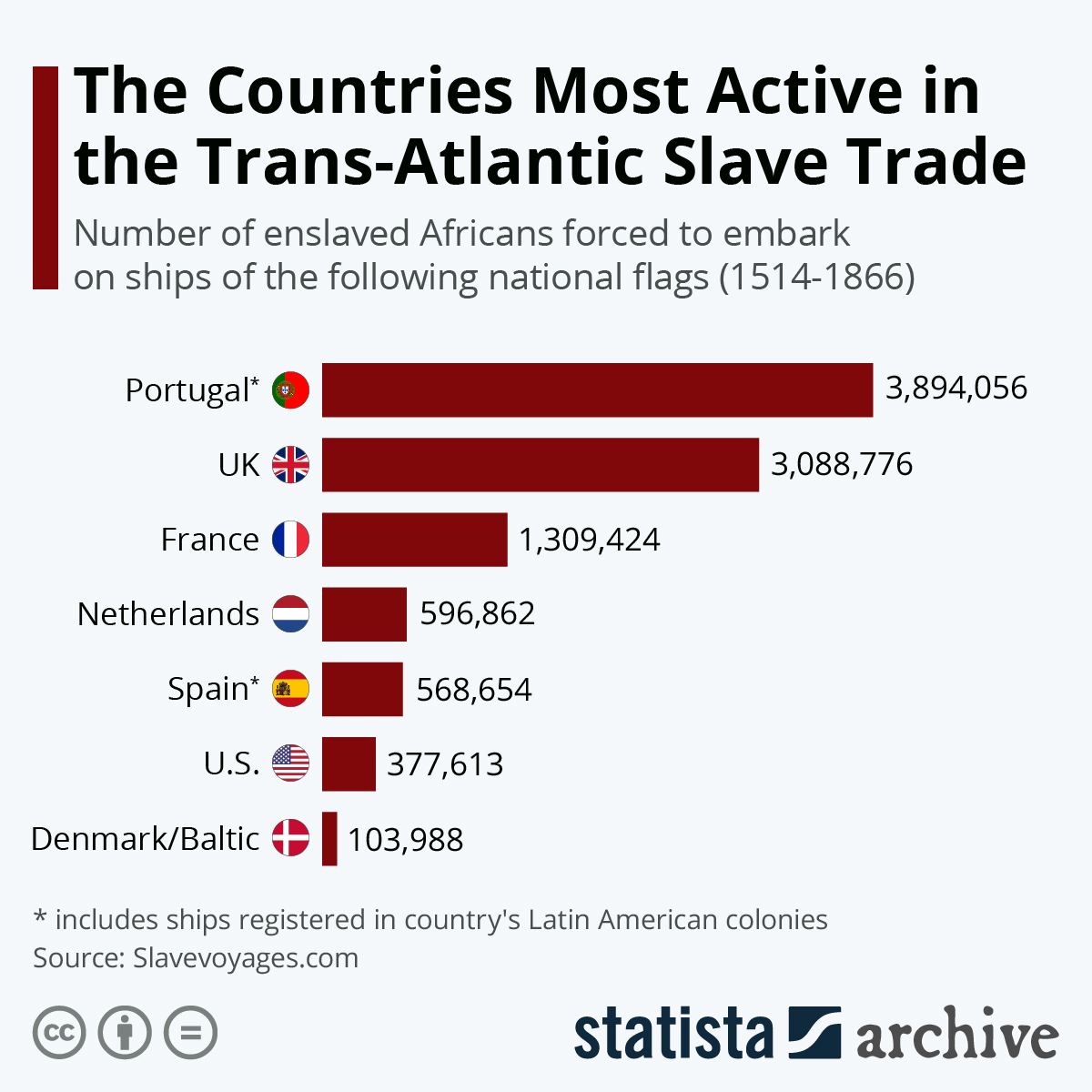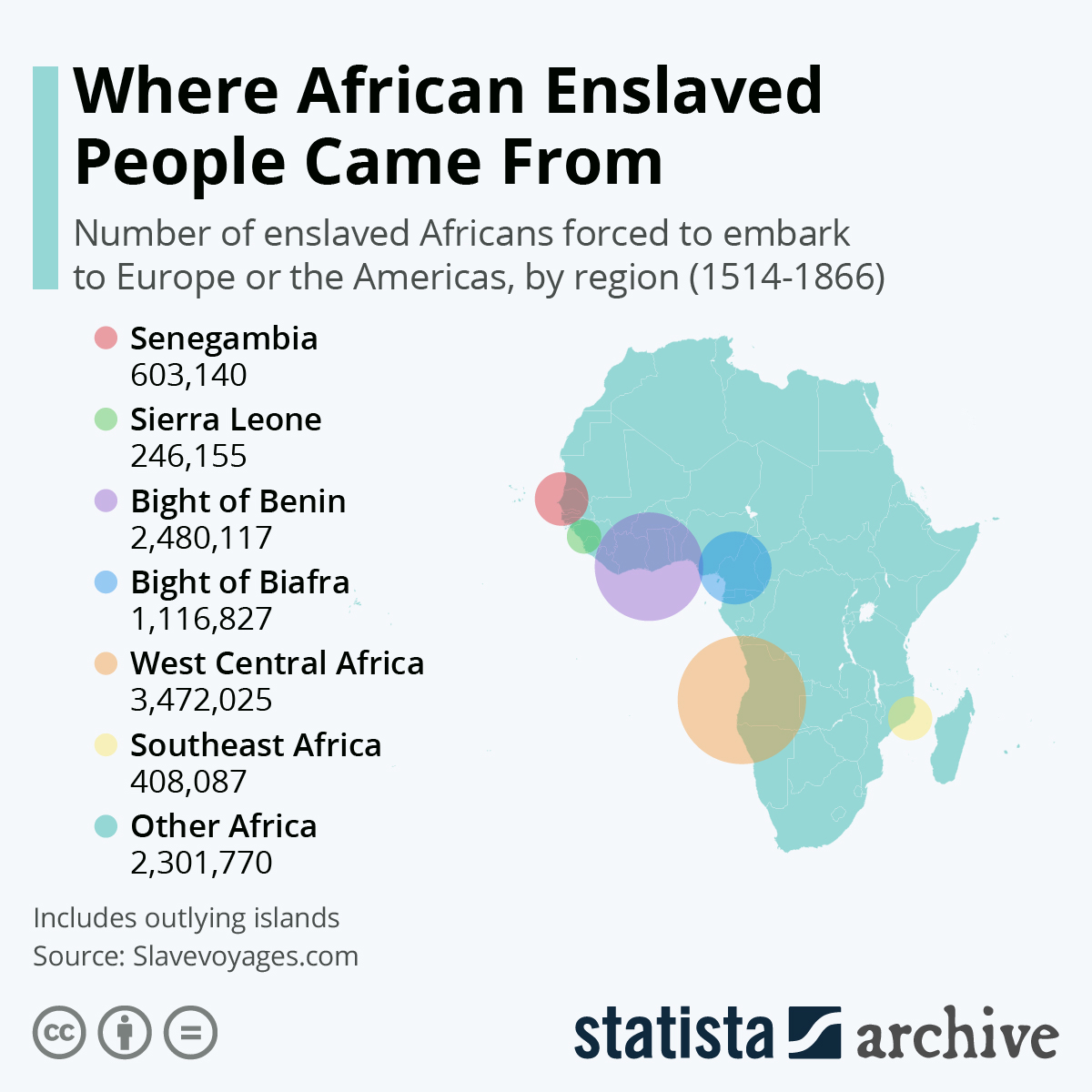Here are some things you need to know about the biggest slave trade in history.
The forced slavery of Africans dates back to as early as the mid-15th century. Rough estimates place the number of people coerced to leave Africa to be enslaved at around 20 to 25 million.
Among the largest and most cruel displacement events in Africa is the Trans-Atlantic slave trade between the 15th century and 18th century when Portugal and other European kingdoms began to kidnap people from the west coast of Africa they shipped back to Europe and to their colonies across the Atlantic.
The chart above based on the data compiled by Slave Voyages shows where the enslaved Africans are transported. Historical studies suggest that the number of Africans forcibly enslaved during the Trans-Atlantic trade is around 11 million.
Which countries are most active in the trade?
During the Trans-American slave trade, the majority — approximately 3.9 million —of the slaves were forcibly transported to Portugal and its Latin American colonies in present-day Brazil.
Following Portugal are the United Kingdom (3.1 million), France (1.3 million), the Netherlands (0.6 million), and Spain (0.6 million) to complete the five highest figures recorded.
In the United States, only around 0.4 million Africans were recorded to have arrived. However, it should be noted that more slaves were transported in the country during the Intra-American slave trade.
Where did the enslaved Africans come from?
Most of the people forced to embark to Europe or the Americas came from West Central Africa. Records estimate that around 3.5 million enslaved Africans came from this region.
Other areas where sharp slave trade activity was observed is in the Bight of Benin (2.5 million) and Bight of Biafra (1.1 million).
As shown in the map above, most of the slave-trading occurred in West Africa, prompting some to call the region the Slave Coast in the past. However, there is also a significant activity of slave trading in East Africa which is driven by Middle Eastern sultanates.
The impact of slavery in Africa
The slave trade in Africa led to a massive population depletion in the continent. If slavery didn’t happen, then the population of Africa would have been about double the actual population which had been observed in 1800.
A lot of Africans also died during the voyages while they were being transported out of their homes due to the inhumane conditions they were subjected to as well as the violent suppression of anyone who resisted.
Apart from capturing Africans, the Europeans also depleted the resources of the continent, impoverishing it. This is a major factor why the economy of Africa remains underdeveloped even today.
Another awful legacy of slave trading in Africa is the deeply entrenched ideology of racism —the false notion of European superiority over Africans — that until now, the world is struggling to remove. While slavery in Africa is long gone, its impact on Africans is still clearly felt today in various aspects of their lives.













